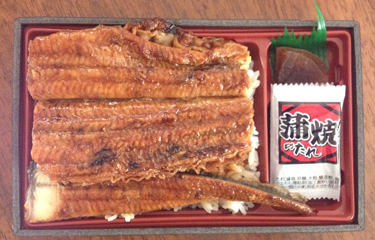Japan’s Midsummer Day of the Ox, when it is traditional to eat eel to maintain stamina in the humid summer, fell on Saturday, 27 July, this year. Sales related to the day typically account for 30 to 40 percent of the country’s annual consumption of eel.
Japan’s catch of glass eels continues to decline, mostly due to the side-effects of dams and other river modifications, but closed-cycle breeding is advancing in the country. Overall, the sector is now achieving about a 10 percent survival rate.
In recent years, the Fisheries Research and Education Organization of the National Research and Development Corporation contracted with Yamada Suisan, an eel grower in Saiki City, Oita Prefecture. Suisan overcame the challenge of ensuring high water quality and found a feed that was accepted by the eels and succeeded in raising artificially hatched eels to adulthood in a culture pond. According to the organization, the resulting eels were not distinguishable from those raised from wild-caught glass eels. Out of 150 glass eels supplied, about 10 percent died due to transport stress. The rest reached a marketable size. Full-cycle aquaculture has thus become technically feasible, but increased production efficiency and significantly reduced costs are required for commercialization.
The laboratory that produced the eggs and raised them to the glass eel stage, the Aquaculture Research Institute of the National Research and Development Corporation, is located in Namiizu-cho, Shizuoka Prefecture. Glass eels there were formerly fed on expensive shark eggs, but these are now being substituted with a feed based on chicken eggs and fishmeal to reduce costs. Breeding for rapid growth is also being pursued.
While there is hope for the future, some other immediate steps are being taken in Japan to deal with the decrease of glass eels. Larger eels were offered this year. Growers are feeding eels longer in order to get more meat while using fewer eels. The resulting eels are thicker, so the bones are cut into small pieces by a machine that makes many light slices in the eel. Supermarket chain Ito-Yokado, a subsidiary of Tokyo-based Seven & I Holdings, sold "super extra-large" kabayaki – a preparation of unagi where the eel is split down the back. With a length of 40 centimeters and a weight of 250 grams, it is twice the usual size offered at retail in Japan.
Another trend, exemplified by Osaka-based sushi chain Sushiro, is to take orders in the weeks leading up to the day. Since eel is a dish promoted for a particular day, much unsold product is usually discarded on the following day. The advance order system allows the chain to prepare only the amount that can actually be sold.
Japanese eel was designated an endangered species in 2014. The harvest from November 2017 to May 2018 was the lowest on record at 3.7 metric tons. However, because of imports, Japanese production is stable, with prices just a little high this year. In the period from November 2018 to May 2019, Japan imported 11.5 tons of young eels, the second-highest on record, according to the Finance Ministry's trade statistics, all via Hong Kong.
Many specialty grilled eel shops have closed over the last decade because high prices have resulted in fewer customers. Yet, consumption of eel has not decreased. Instead, consumers save money by buying cooked eel at the supermarket, choosing from domestic or the cheaper Chinese imports. Beef bowl restaurants and sushi chains are also getting in on the action, offering smaller servings at reasonable prices.
Still, it is general consensus in Japan that a dwindling resource will lead to ever-higher prices, or outright disappearance of the dish. Using other species of eel has already been tried, but the European Union prohibits the export of European eel, and the supply of American eel from the U.S.A. (primarily from the state of Maine) is fairly limited, though Haiti has emerged as a source for China. Bicolor eel and other eel species have been introduced, yet there is growing awareness that moving pressure from one species to another and depleting each is not a long-term solution. The hope amongst those in the eel business in Japan – and those that enjoy kabayaki and other preparations of eel as a culinary specialty, hope closed-cycle breeding will be successfully commercialized in coming years.
Photo courtesy of Chris Loew/SeafoodSource







